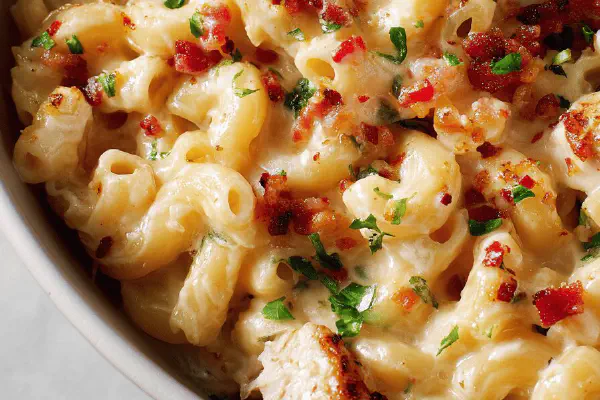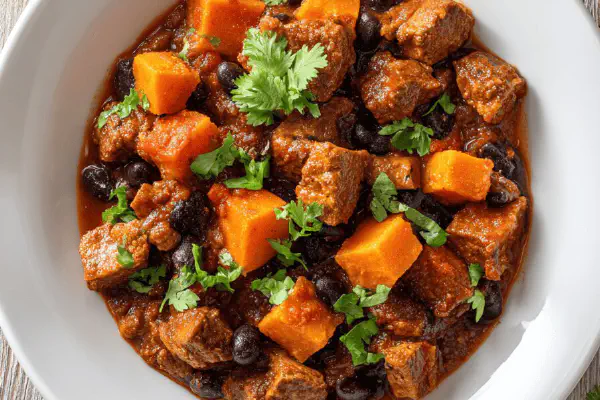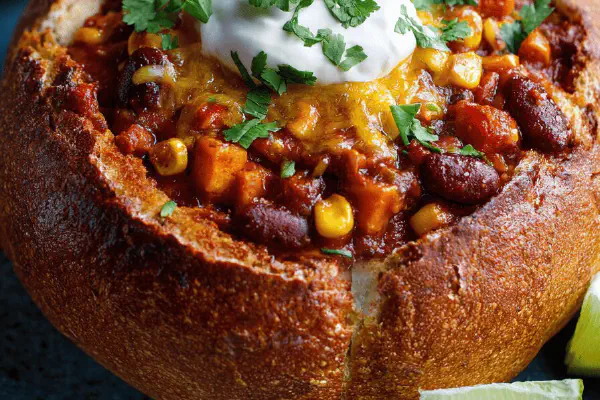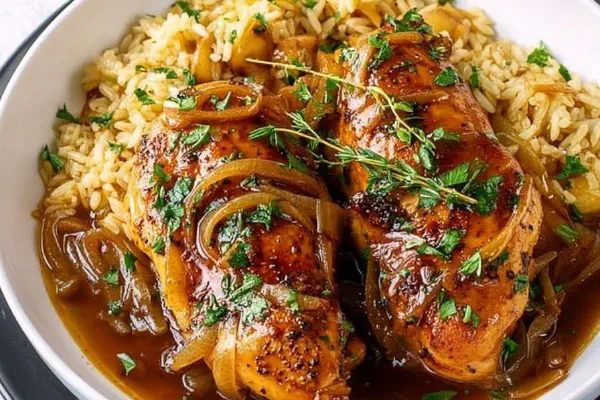One-Pot Spicy Mac Cheese

By Emma
Certified Culinary Professional
Ingredients
- 110 g diced pancetta
- 5 ml smoked paprika
- 5 ml chili seasoning
- 750 ml chicken broth
- 500 ml half-and-half
- 340 g macaroni pasta
- 60 ml mascarpone cheese
- 200 g sharp white cheddar cheese shredded
- 2 minced garlic cloves
About the ingredients
Method
- Heat pancetta in large deep skillet over med-high heat, render until edges crisp and golden, fat released in pan; smell that sweet pork aroma? Add minced garlic, smoked paprika, chili seasoning, stir constantly about 1 minute. Watch garlic closely — avoid browning, burnt = bitter.
- Pour in chicken broth and half-and-half. Bring all to strong simmer, tiny bubbles around pot edges, stir well scraping browned bits off bottom. Gradually add dry macaroni pasta.
- Turn heat to medium, stir every few minutes, macaroni absorbing liquid slowly. No rushing this part. Should take closer to 20 minutes but check noodles—you want tender but firm, al dente with just a slight chew.
- If liquid evaporates too fast, add splash more broth or water; too soupy? Turn heat up briefly to reduce slightly, stirring nonstop to avoid scorching.
- When pasta's right, move pan off heat. Quickly fold in mascarpone and shredded white cheddar. Cheese melting instantly in warm sauce out of direct heat, silky, rich. Season with cracked black pepper. Stir gently coaxing creamy shine.
- Serve immediately. On reheating, add small splash liquid before warming up or sauce thickens and grainy cheese lumps can form.
- Important: Resist temptation to add salt early—pancetta and broth have enough. Taste before finishing. If needed, tiny pinch at end will suffice.
Cooking tips
Chef's notes
- 💡 Start low and slow with pancetta. Crisp edges mean flavor released. Quick high heat shrinks and toughens pork fat. Pancetta fat renders out but don’t rush it. Garlic goes in late—just as pancetta goes golden. Watch closely; burnt garlic hits bitter fast. Stir constantly when adding paprika and chili; spices toast but burn quickly. Smell changes signal good timing.
- 💡 Liquid management key when cooking macaroni in broth mix. Stir often, scrape pan bottom, keep pasta moving to stop clumping. Watch bubbles precisely—steady ring around edges means simmer’s right. If pasta soaks up too fast dry spots form. Add broth or water in small amounts to keep sauce silky but not soupy. Adjust heat to reduce gentle, avoid scorched bottom.
- 💡 Mascarpone folds in last, off heat. Adds silkiness without overwhelming sharp cheddar’s bite. Cheese melts smoother that way. Use shredded sharp white cheddar instead of orange for less sweetness, more depth. Avoid pre-shredded processed cheese; gluey textures wreck sauce. Add cracked black pepper last—fresh grind wakes sauce, balances richness without salt overload.
- 💡 Scaling pancetta adjusts pork flavor punch. More pancetta means more fat flavor but risk of greasy mouthfeel. Less is easier, cleaner flavor path. Pancetta burns easy so stir often. Garlic instead of mustard powder avoids bitterness sometimes found in powder. Smoked paprika adds subtle smoke rather than heat; chili seasoning controls heat level—adjust per taste but start low.
- 💡 Noodles done when tender but still firm to bite. Piercing test better than timer. Overcooked noodles turn gluey with cheese, grainy sauce. Undercooked feels raw. Off heat cheese fold-in essential. Reheating needs added liquid to loosen sauce or it thickens, clumps. Break clumps by gentle stirring, avoid high heat or fast speed—then texture suffers. Salt sparingly; pancetta and broth bring enough.
Common questions
How to stop garlic burning?
Add late when pancetta edges just golden. Stir constantly. Garlic sugars burn fast. Smell will warn. Low heat helps but don’t wait too long or garlic won’t aromatize much.
Can I use milk instead of half-and-half?
Milk thins sauce, less creamy feel. Use whole milk for richer mouthfeel; cream thickens but risks curdle. Half-and-half balance richer texture and stability on heat—adjust heat gentle.
What if pasta sticks or clumps?
Stir often. Cook over moderate heat. Add liquid as needed. Scrape bottom to free bits. Pasta shouldn’t sit dry too long or clumps form. Risotto method works—slow addition, constant motion.
Can leftovers be frozen?
Freezing changes texture. Sauce thickens, cheese can separate. Better refrigerate. Reheat gently with added broth or water. Microwave or stove low heat—stir often. Freeze only if desperate; thaw slow.



